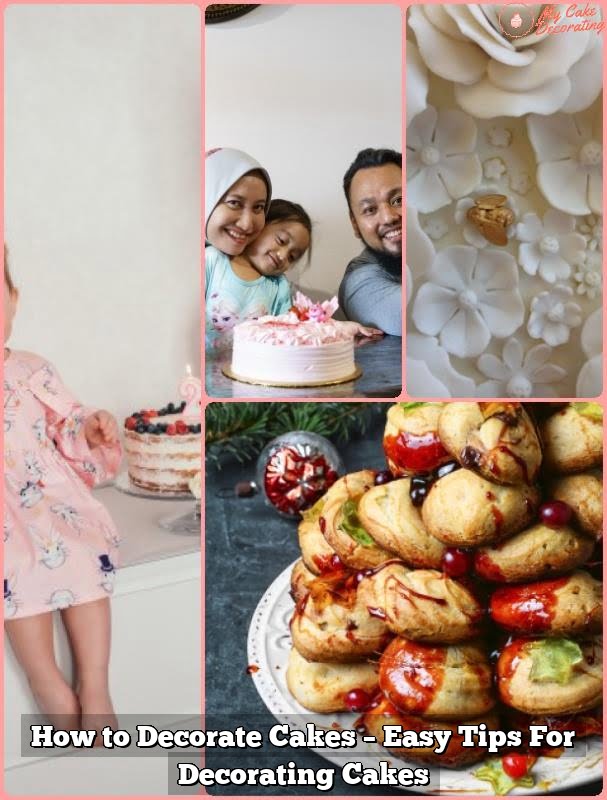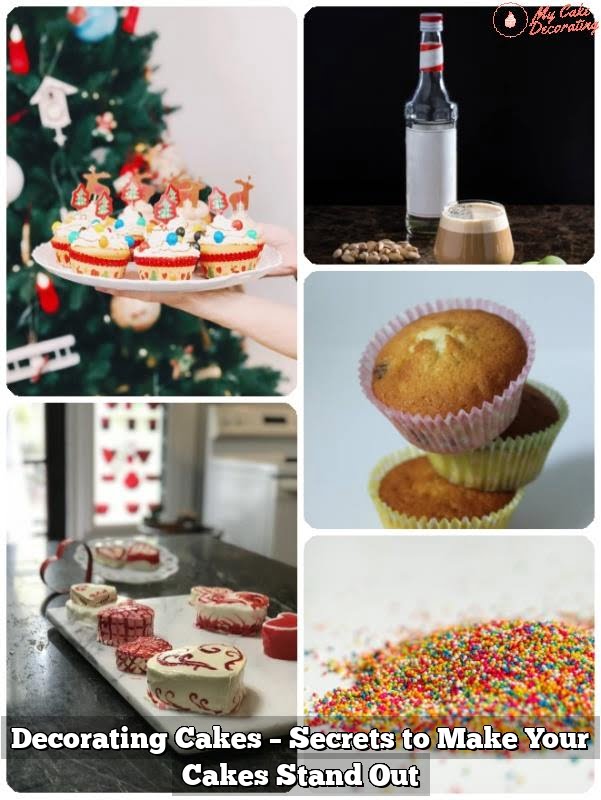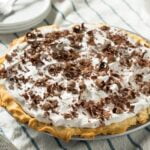Are you wondering what to use to decorate cakes and how to make your baked creations look and taste even more delicious? Cake decoration is more than just adding a pretty design – it can elevate the overall look and taste of a cake, making it a truly stunning centerpiece for any occasion.
When it comes to decorating cakes, having the right tools is essential. From piping bags and tips to spatulas and turntables, these basic tools are crucial for achieving professional-looking decorations that will impress your friends and family.
In addition to the tools, choosing the right type of frosting is also important. Buttercream, fondant, royal icing, and ganache each have their unique uses and can create different textures and finishes on your cake. Edible decorations like fruits, nuts, chocolate, and candies can add an extra layer of flavor and visual appeal to your creations as well.
Basic Tools for Cake Decorating
When it comes to decorating cakes, having the right tools is essential to achieve professional-looking designs. The basic tools for cake decorating are crucial for creating beautiful and intricate decorations that can elevate the overall look and taste of a cake. Some essential items include piping bags, tips, spatulas, and turntables, each serving a specific purpose in the decoration process.
Piping bags are used to pipe frosting onto cakes in various designs and patterns. They come in different sizes and materials, such as disposable plastic or reusable cloth. Piping tips, on the other hand, determine the shape of the frosting as it is piped onto the cake. There are numerous types of piping tips available, each creating different effects such as stars, shells, or rosettes.
Spatulas are another essential tool for cake decorating, used for spreading frosting evenly across the surface of a cake. Offset spatulas are particularly useful for achieving smooth and straight edges. Turntables also play a crucial role in cake decorating by allowing decorators to easily rotate the cake as they work on different sides.
This helps achieve uniformity and precision in the decoration process. Understanding how to use these basic tools is fundamental for anyone looking to decorate cakes effectively and creatively.
Different Types of Frosting
When it comes to decorating cakes, the type of frosting you use plays a significant role in the overall appearance and flavor of the finished product. There are several options to consider, each with its own unique characteristics and uses. One popular choice is buttercream, which is versatile and can be flavored and colored in various ways. It’s perfect for creating smooth finishes or intricate designs through piping.
Fondant is another commonly used frosting that provides a smooth and polished look to cakes. It can be rolled out and draped over the cake for a flawless finish, making it ideal for wedding cakes or special occasion desserts. Royal icing, on the other hand, dries to a hard, shiny finish, making it great for intricate details like lacework or delicate patterns.
For those who prefer a rich and indulgent option, ganache is a luxurious frosting made from chocolate and cream. Its glossy texture makes it perfect for pouring over cakes or creating a smooth glaze. Additionally, ganache can be whipped to create a lighter consistency for filling or frosting layer cakes.
Ultimately, the type of frosting you choose depends on your desired aesthetic, flavor preferences, and practical considerations such as temperature stability and shelf life. Understanding the unique uses of each type of frosting will help you make an informed decision on what to use to decorate your cakes. Whether you’re aiming for a classic look with buttercream roses or a modern fondant-covered masterpiece, selecting the right frosting is essential in achieving your desired cake design.
Edible Decorations
When it comes to decorating cakes, edible decorations can add a beautiful and delicious touch to any cake. Fruits such as berries, citrus slices, and kiwi can provide a fresh and vibrant look to a cake, while nuts like almonds, pistachios, and hazelnuts can add texture and richness.
Chocolate, in its various forms including shavings, curls, or even molded shapes, can bring a touch of indulgence to the overall design. Candies such as sprinkles, gummies, or rock candy can also be used to add color and whimsy to the cake.
One of the advantages of using edible decorations is that they not only enhance the visual appeal of the cake but also contribute to its flavor profile. The natural sweetness of fruits complements the sweetness of the cake itself while adding a burst of freshness. Nuts offer a satisfying crunch and nutty flavor that pairs well with different types of frosting.
Chocolate brings a luxurious richness that elevates the taste experience. Using candies allows for creative expression with various colors, shapes, and flavors.
In addition to their aesthetic and flavor benefits, edible decorations are versatile in terms of application. They can be easily placed on top of cakes or incorporated into designs on the sides or even inside the layers for surprise elements within the cake. Whether used individually or combined creatively, these edible items provide a wide range of options for decorating cakes in both simple and elaborate ways.
| Type of Edible Decoration | Function |
|---|---|
| Fruits | Provide freshness and vibrancy; complement cake’s sweetness |
| Nuts | Add texture and nutty flavor; pairs well with frosting |
| Chocolate | Bring luxurious richness; versatile in different forms |
| Candies | Add color and whimsy; allow for creative expression |
Advanced Techniques
Piping
Piping is a popular advanced decorating technique that involves using a piping bag and various tips to create intricate designs on cakes. This technique allows decorators to create borders, swirls, flowers, and other detailed patterns using buttercream or royal icing. Different piping tips produce different effects, so it’s important to experiment with various tip sizes and shapes to achieve the desired look. Piping requires practice and patience, but once mastered, it can elevate the overall appearance of a cake.
Stenciling
Stenciling is another advanced cake decorating technique that can add beautiful and intricate designs to cakes. Decorators can use food-safe stencils in combination with powdered sugar, cocoa powder, or edible paint to create detailed patterns on the surface of the cake. Stenciling can be used to achieve elegant damask prints, geometric patterns, or even personalized messages on cakes. It’s a versatile technique that allows for creativity and customization when decorating cakes for special occasions.
Sculpting
Sculpting is an advanced technique commonly used in creating custom cake designs such as three-dimensional figures, characters, or objects. Cake decorators can use fondant or modeling chocolate to sculpt detailed shapes and figurines that bring a unique touch to their creations. Sculpting requires precision and artistic skill, making it a challenging but rewarding aspect of cake decoration.
Airbrushing
Airbrushing is a more modern and sophisticated technique for decorating cakes. This method involves using an airbrush machine with edible food color to spray fine layers of color onto the cake’s surface. Airbrushing allows for smooth gradients, shading effects, and intricate details that are difficult to achieve with traditional methods. It’s an advanced technique that requires practice and control but can result in professional-looking designs that stand out.
When considering what to use to decorate cakes using these advanced techniques like piping, stenciling, sculpting, and airbrushing provide decorators with the opportunity to take their cake decorations to the next level in terms of creativity and professional-looking designs. Practice makes perfect when it comes to mastering these techniques so don’t be discouraged if your first attempts aren’t flawless – keep experimenting and refining your skills.
Specialty Items for Specific Themes
When it comes to special occasions such as weddings, birthdays, and holidays, adding a touch of uniqueness to cake decorations can take your creation to the next level. There are specialty items that can be used to add flair and personality to cakes for these specific themes. Below are some suggestions for specialty items that are perfect for adding an extra special touch to your cakes:
- Edible Flowers – Edible flowers such as roses, lavender, pansies, and violets can be used to elegantly decorate cakes for events like weddings or garden parties. These delicate blooms add a natural and romantic feel to any cake design.
- Edible Metallic Paints – Metallic paints in gold, silver, copper, and other metallic tones can be used to add a luxurious and trendy look to cakes for special occasions like anniversaries or New Year’s celebrations. These edible paints can be used to create shimmering accents or elegant designs on fondant-covered cakes.
- Themed Toppers – For birthdays and holidays, themed cake toppers such as figurines of favorite characters, personalized monograms, or festive motifs like snowflakes, pumpkins, or fireworks can instantly tie the cake into the event’s theme. These toppers not only serve as eye-catching decorations but also make the cake more meaningful for the occasion.
These specialty items offer a unique way of personalizing and enhancing the visual appeal of cakes for specific events. When choosing which items to use for a particular occasion, consider the theme and style you want to achieve with your cake decoration.
It’s important not only what you use but also how you use these specialty items in conjunction with other decorating techniques and tools. By combining different decorative elements thoughtfully, you can create stunning cakes that stand out and make a memorable impression at any special celebration or gathering.
Whether it’s adorning a wedding cake with delicate edible flowers or giving a birthday cake some sparkle with metallic embellishments, incorporating specialty items into your cake decorations allows for endless creativity and customization.
DIY Decoration Ideas
When it comes to decorating cakes, there are plenty of creative and budget-friendly ideas for homemade cake decorations that utilize everyday items and ingredients. These DIY decoration ideas can add a personal touch to your cakes and make them stand out for special occasions. Here are some fun and inventive ways to decorate your cakes without breaking the bank:
DIY Decoration Ideas
- Fresh Fruit Decorations: Using fresh fruits like strawberries, blueberries, kiwi, or raspberries can add a pop of color and freshness to your cake. Arrange the fruits in a decorative pattern or use them to create floral designs for a beautiful and delicious finish.
- Chocolate Shavings or Curls: Sprinkling chocolate shavings or creating chocolate curls with a vegetable peeler can instantly elevate the look of your cake. Whether it’s dark, milk, or white chocolate, this simple garnish adds an elegant touch.
- Homemade Floral Toppers: Create your own floral toppers using edible flowers like pansies or violets. These delicate blooms can be crystallized with sugar for a stunning addition to any cake.
These are just a few examples of how you can use everyday items and ingredients to decorate cakes. Get creative with what you have on hand and don’t be afraid to experiment – you might discover some new favorite decorations along the way. Remember that homemade decorations not only save money but also add a personal and heartfelt touch to your baked creations. With some imagination and resourcefulness, creating stunning cake decorations at home is easier than you think.
Tips for Successful Cake Decoration
When it comes to cake decorating, achieving clean and precise decorations can be a challenge for many beginners. However, with the right tips and tricks, anyone can create professional-looking designs on their cakes. Here are some tips for successful cake decoration that will help you elevate the overall look of your baked creations.
Use the Right Piping Technique
One of the key elements of successful cake decoration is mastering the art of piping. Whether you’re creating borders, flowers, or lettering, using the right piping technique is crucial. Make sure to hold the piping bag at a 90-degree angle to the surface of the cake and apply even pressure to achieve consistent results. Practice different piping techniques on a sheet of parchment paper before attempting them on your cakes.
Keep Your Tools Clean
Clean tools are essential for achieving clean and precise decorations. Before starting any decorating project, make sure that your piping tips, spatulas, and turntable are thoroughly cleaned and dried. Any residue from previous use can affect the overall look of your decorations. Additionally, it’s important to wipe off any excess frosting or icing from your tools as you work to maintain clean lines and smooth surfaces on your cakes.
Troubleshooting Common Decorating Challenges
Even experienced bakers encounter decorating challenges from time to time. If you find that your frosting is too runny or your decorations aren’t holding their shape, there are several troubleshooting techniques you can try. For runny frosting, try adding more powdered sugar to stiffen it up. If your decorations aren’t holding their shape, place them in the refrigerator for a few minutes to firm up before continuing with your design.
By following these tips for successful cake decoration, you’ll be able to achieve clean and precise designs on all of your baked creations. Don’t be afraid to experiment with different techniques and have fun with your decorations.
Conclusion
In conclusion, decorating a cake is not just about making it look appealing but also plays a vital role in enhancing the taste and overall presentation. By using the right tools and techniques for cake decoration, one can easily elevate a simple cake into an eye-catching masterpiece. From basic tools like piping bags and spatulas to advanced techniques such as airbrushing and sculpting, there are numerous options available to unleash creativity and achieve professional-looking designs.
Additionally, exploring different types of frosting such as buttercream, fondant, royal icing, and ganache opens up a world of possibilities for creating unique textures and flavors. Incorporating edible decorations like fruits, nuts, chocolate, and candies further adds depth and visual interest to the cake. Moreover, specialty items like edible flowers, metallic paints, and themed toppers can be used to tailor the decoration according to specific themes or occasions.
Ultimately, no matter the level of expertise in cake decoration, experimenting with different tools and techniques is key to honing one’s skills. Furthermore what’s important is not only achieving visually stunning results but also enjoying the process of creating decorative masterpieces that reflect personal style and creativity.
Whether it’s for a special celebration or simply for the love of baking, exploring various options for cake decoration can lead to endless possibilities for turning any cake into a work of art.
Frequently Asked Questions
What Can You Use Instead of Frosting for a Cake?
Instead of frosting, you can use alternatives like whipped cream, ganache, or glaze to decorate a cake. Whipped cream creates a light and airy topping, while ganache provides a rich and glossy finish.
What Do Bakers Use to Decorate Cakes?
Bakers use various tools and ingredients to decorate cakes, such as fondant, buttercream, edible flowers, icing sugar, and piping bags with different tips. These items help create intricate designs, patterns, and textures on the cake’s surface.
What Do You Decorate Your Cake On?
When decorating a cake, bakers typically work on a turntable or revolving cake stand to easily access all sides of the cake. This allows them to apply frosting or decorations evenly without having to constantly move the cake around. Using a flat surface like a cake board or plate provides stability for the cake during decorating.

Welcome to my blog about home and family. This blog is a place where I will share my thoughts, ideas, and experiences related to these important topics. I am a stay-at-home mom with two young children. I hope you enjoy reading it! and may find some helpful tips and ideas that will make your home and family life even better!





